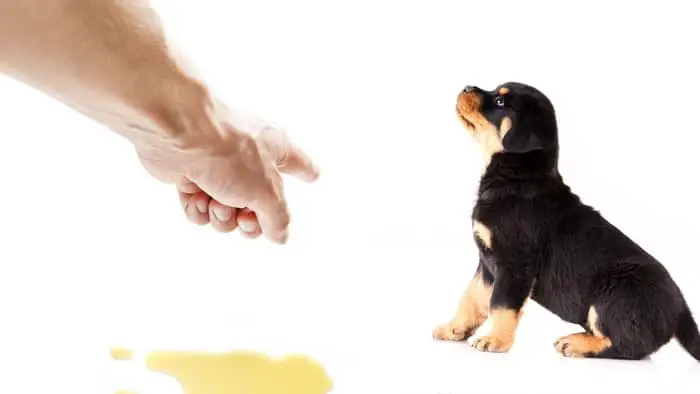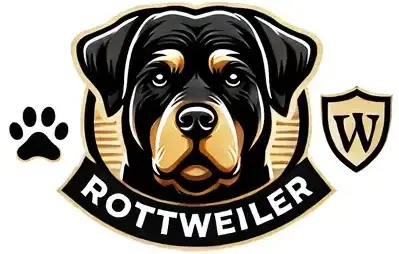Last Updated on April 24, 2024 by Dr. Julie
What tips can you share about housebreaking a stubborn puppy that completely refuses to use the potty no matter your efforts to train him?
Congratulations on adopting your new puppy. Yes, it is evident you love everything about it – from its small nose to its beautiful wagging tail. However, you can’t take the messes he leaves on the floors and your expensive carpet.
It may look like your puppy will never potty train when he keeps having accidents within your home, but there are steps you can take to get your dog appropriately trained.
Housebreaking a stubborn puppy requires consistent training; your tiny pup will most likely be well trained, and you will not have to worry anymore about the accidents.
Table of Contents
How To Housebreak A Stubborn Dog
Although you can housebreak your dog at any age, it’s best to start training your puppy as early as possible. Beginning the training as early as possible, at around 12 to 16 weeks, is ideal. At this age, your pup can hold her bladder and bowels a little longer.
Starting a puppy’s training early is essential because puppies can be a bit stubborn. It doesn’t matter what breed your dog is; all puppies tend to test your leadership skills.
You will need to be consistent with the potty training and expect the housebreaking process to take at least 4 to 6 months of daily exercise. Though some dogs take lesser time, be extra patient with the ones that may take longer.
If you plan on training your pup to eliminate indoors, bring your puppy out consistently to their litter box or potty pad. While outdoors, pick one spot and always bring the dog to that spot.
How To House Train A Stubborn Dog That Won’t Potty Train
It might seem like your puppy is stubborn and won’t train quickly, but maybe you are not giving them enough chances for success. Potty training takes at least 6 months of training, so patience is a must-have when training.
The 2 most important things to help you start on the path to success are
Feed your pup at the same time every day so that elimination happens at consistent times each day
Plan for lots of bathrooms breaks to make your training successful
The Humane Society of the United States recommends small puppies to go out every 2 hours because they have tiny bladders, so they can’t hold it in for long. This may seem like a lot, but it ensures your pup reliably eliminates where you want it to.
Little pups may need a bathroom break once in the middle of the night to start with until they can hold their bladders throughout the night. Also, take your pup to its potty or outside first thing in the morning, right after meals and just before bedtime to ensure there are no accidents.
The more chances you give your pup and show them where to go, the better your options at the potty training being successful.

Learn more about: How To Assert Dominance Over A Puppy
Effectively Housebreaking A Stubborn Puppy
If you notice your puppy is stubborn, don’t punish it; instead, follow some of these steps to help you win.
Choosing a perfect potty spot
The first and most crucial requirement for potty training is choosing a perfect spot. Whether indoors or outdoors, the site you choose needs to be ideal for the puppy.
Go for a spot that is easy to get to away from obstacles that your puppy might have difficulty reaching. Chose a covered place to protect them from rain, snow or excessive sun. If you select an area indoors, always have the potty pad ready whenever your dog wants to eliminate it.
If you go outdoors, set up the litter box in an easy to access spot in your home so that your dog can always access it. You can find dog-specific litter boxes in pet stores.
Train On A Schedule
To ensure your potty training is successful, give your dog plenty of opportunities to do their business. For puppies, this means you take them out for breaks as often as every hour at the start of the training during the day and at least once during the night.
Go for the potty break 5 to 30 minutes after feeding your puppy because they are most likely to be eliminated after a meal.
First thing in the morning, when you get up, take your puppy to the potty or first thing when you get home. If you are not home all day, you may need to have someone stop by and give your pup at least 1 or 2 potty breaks.
If your puppy is not litter box trained, she can visit the box when older but will need your prompts until they understand where to go.
Visiting The Potty Spot and Training
Once you have chosen an ideal spot, start training according to your set schedule.
Take your puppy to the spot you chose and say phrases like “go potty”, then wait for them to do their business. Stick to one term when you take them for potty to avoid sending mixed messages. When your puppy does their business at the spot you chose, reward them with a treat.
If your puppy gets to the spot and does not eliminate, wait for a few minutes before leaving the potty spot. You can come back again within 10 to 15 minutes to repeat the process. If your area is outside, ensure that you give your dog a reasonable amount of time outdoors to play before potty time to avoid confusing the two.
It is usual for your puppy to want to sniff around for a few minutes before eliminating; this is because the scent of urine or faeces attracts him to use the same spot. This makes your work even more accessible.
Do not forget to praise your puppy any time it eliminates at the chose spot.
Conclusion
Remember when housebreaking a stubborn puppy; accidents are bound to happen during this process. Your puppy is not perfect; it is learning, so be patient with it a few times.
When you find faeces, pick them up and place them at the right spot where potty should happen – whether indoors or outdoors. That smell will attract your puppy to go where she is supposed to.
When cleaning accidents, use an enzymatic cleaner to get rid of the smell of faeces or urine completely. You don’t want this odour to attract the puppy back to the wrong spot.
When eliminating at the right spot, if you notice that urine or faeces are falling outside the box, choose a box with bigger sides but has a low entrance for your dog to use comfortably.
